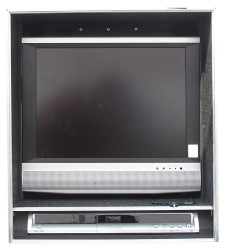 When you turn off an appliance, does it really shut down?
When you turn off an appliance, does it really shut down?
Most electronic items drink electricity even when they're off. They go into standby and keep the current flowing to their clocks, memories and remote switches.
Don't let a "vampire" device drive up your electric bill — turn it off at the power source!
Why and How to Turn It Off
Between 5% and 8% of the electricity in our schools, offices and homes pours into devices that are not in use. Over a year, that adds up to about one month's electrical usage.
The U.S. Department of Energy estimates that the average U.S. household spends $100 per year to power devices while they are off or in standby mode.
Some electronics use almost as much electricity when they're off as when they're on.
Like a leaky faucet, this drip of electricity does us no good and costs us money. The good news is, stopping or reducing it is easy. Here are some ways:
- Don't just turn the appliance off — detach its plug from the wall. And if the plug is hard to reach …
- Plug your appliances into power strips or surge protectors. Turn off the power strip when you aren't using the appliance.
- Use "smart" power strips that automatically turn devices off when they're not in use.
- Buy ENERGY STAR appliances and electronics. These are more energy-efficient and use less standby power.
- Before buying a new appliance or electronic item, find out whether it guzzles or sips electricity during standby. Search the Lawrence Berkley National Laboratory web site for products that use less than 1 watt of standby power.
Read about other ways to conserve electricity.